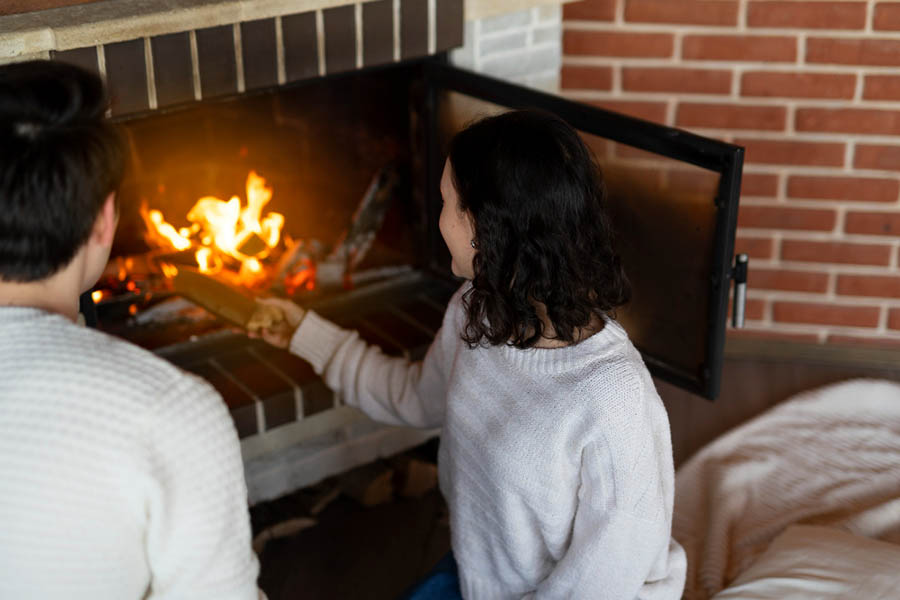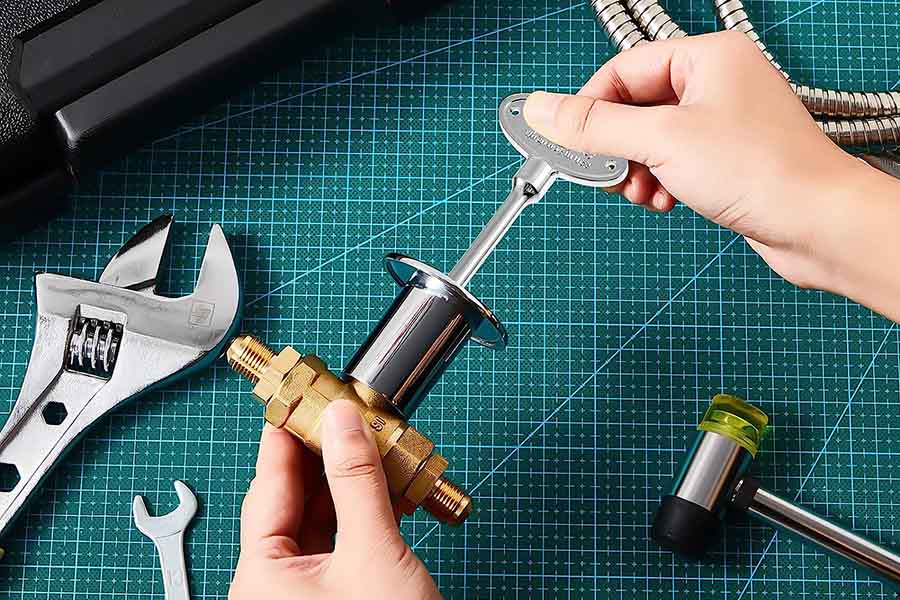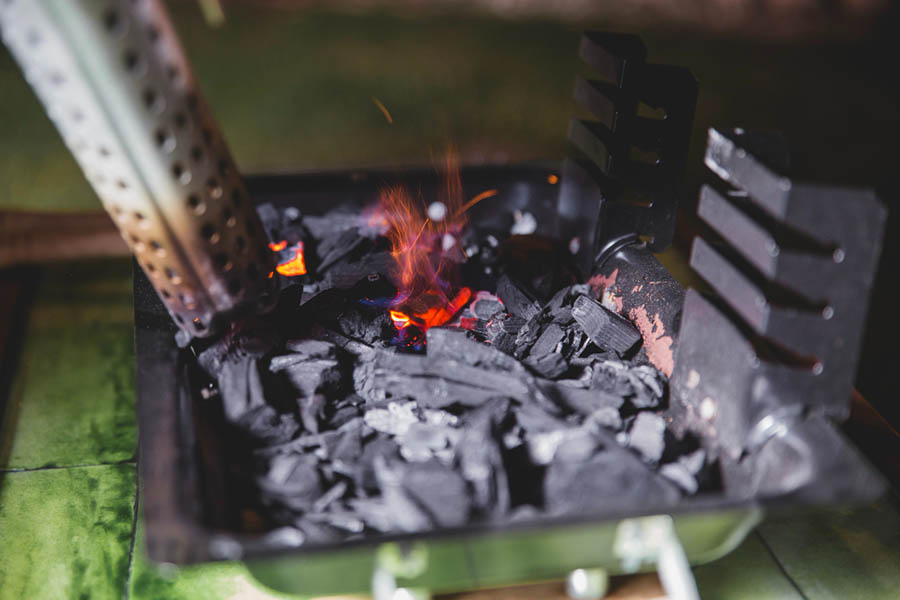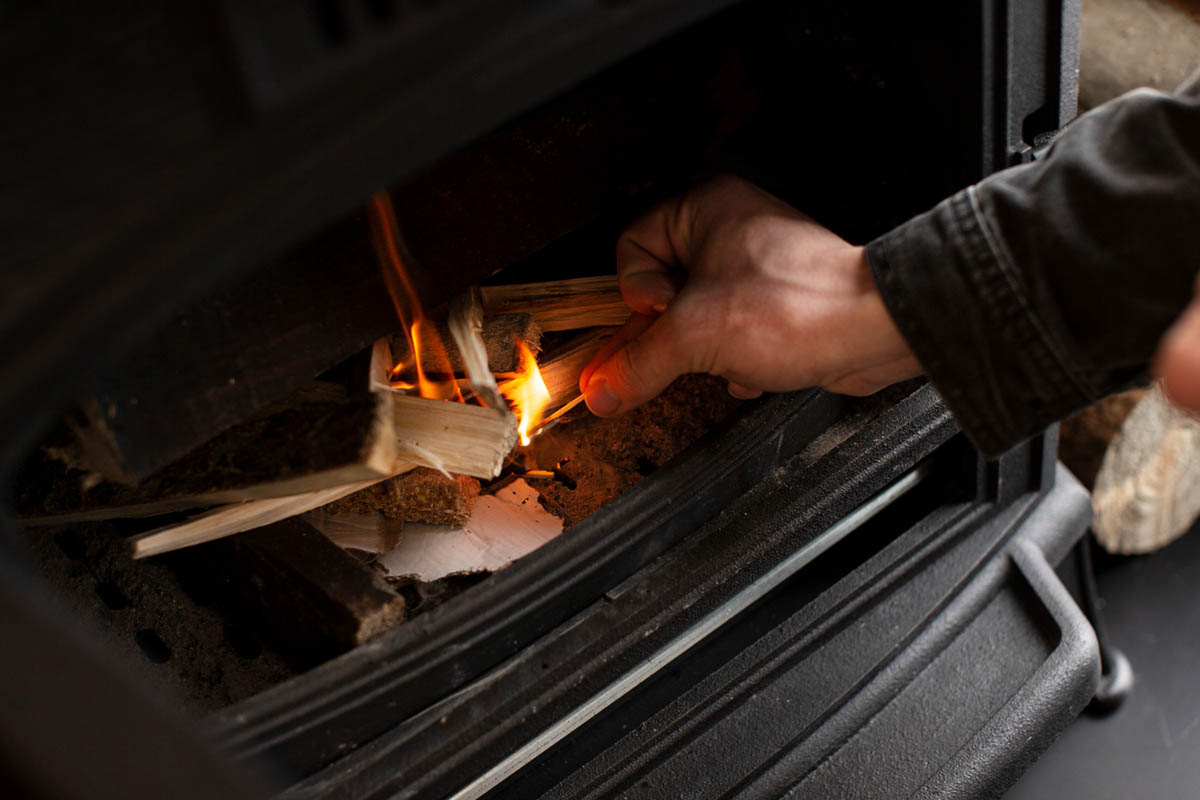Power outages can be unexpected and inconvenient, leaving us without essential utilities such as electricity for heating. However, if you have a gas fireplace, you have a reliable alternative to stay warm during these challenging times.
Understanding how to start a gas fireplace without electricity is essential to ensure your comfort and safety during a electrical outage.
In this guide, we will explore different gas fireplace ignition systems and the necessary steps to manually ignite your fireplace when the power is out.
Understanding Gas Fireplace Ignition Systems

Gas fireplaces come equipped with various ignition systems that determine how the fire is ignited and controlled. Understanding these systems is essential for safely starting and operating your fireplace insert, especially during a power outage.
Two common types of gas fireplace ignition systems are the Intermittent Pilot Ignition (IPI) Valve System and the Standing Pilot Light System.
Intermittent Pilot Ignition (IPI) Valve System
The Intermittent Pilot Ignition system is a popular choice in modern gas fireplaces due to its energy efficiency.
This system utilizes an electronic control module and a pilot flame that ignites only when the fireplace is in use.
When you turn on the fireplace, the electronic control module sends an electric spark to the pilot flame, igniting it. Once the pilot flame is established, it ignites the main burner, creating a warm and inviting fire.
The advantage of the Intermittent Pilot Ignition system is that the pilot flame is only present when the fireplace is in use, reducing gas consumption compared to other systems.
Standing Pilot Light System
The Standing Pilot Light System is another common gas fireplace ignition system. In this system, a small pilot flame remains continuously lit, even when the fireplace is not in use.
The standing pilot flame ignites the main burner when you activate the fireplace.
While the Standing Pilot Light system is less energy-efficient than the IPI system, it offers a reliable and convenient method to have intermittent ignition system start the fire without the need for electronic components.
Igniters and Pilots
In gas fireplaces, the ignition process and smooth operation rely on two essential components: igniters and pilots. These components play a critical role in providing a convenient and safe alternative to manual lighting.
Both in the IPI and Standing Pilot Light systems, the igniter generates sparks to ignite the pilot flame. This pilot flame is a continuously burning small flame that serves as the ignition source for the main burner when the gas fireplace is activated.
In the IPI system, the pilot flame is electronically ignited when needed, ensuring efficient and controlled ignition.
On the other hand, in the Standing Pilot Light system, the pilot flame remains constantly lit, acting as a stable ignition power source. This setup allows for easy fireplace startup and maintains consistent flames throughout usage.
Safety Tips for Starting Gas Fireplaces During a Power Outage

When starting a gas fireplace during a power outage, safety should always be the top priority.
Before attempting manual ignition, familiarize yourself with the manufacturer’s manual to understand the specific safety guidelines for your fireplace model. Adequate ventilation is crucial to disperse combustion by-products, including carbon monoxide, which may be produced during the ignition process.
Ensure that the area around the fireplace is clear of any flammable objects and materials. Installing carbon monoxide detectors and fire alarms near the fireplace and throughout your home adds an extra layer of protection, alerting you to potential hazards.
By following these safety tips, you can confidently and safely start your gas fireplace during a electrical outage, providing much-needed warmth and comfort in challenging times.
Can You Safely Run Your Gas Fireplace During a Power Outage?
One common concern among homeowners is the safety of running a gas fireplace without electricity, particularly regarding carbon monoxide leakage. However, modern gas fireplaces are equipped with safety features to minimize such risks.
Most gas fireplaces are designed with a safety shut-off feature that halts gas flow if the pilot light goes out, preventing gas leakage.
To address concerns about carbon monoxide, install carbon monoxide detectors and fire alarms near the fireplace and throughout your home.
Addressing Carbon Monoxide Concerns with Gas Fireplaces
Gas fireplaces can produce carbon monoxide (CO), a colorless and odorless gas, during the combustion process. In a well-functioning gas fireplace, the levels of carbon monoxide should not be dangerous.
Nevertheless, during an electrical outage, it becomes essential to maintain proper ventilation to ensure the safe dispersion of combustion by-products, including carbon monoxide.
Enhance your safety measures by installing carbon monoxide detectors in your home. These detectors will provide an extra layer of protection by alerting you if unsafe levels of CO are detected.
Removing Batteries When Power Is Restored
When your gas fireplace operates with battery backup during a power outage, it’s essential to remove the batteries once the power is restored.
Leaving the batteries in the fireplace’s electronic components may lead to malfunctions or drainage, affecting its normal operation.
By removing the batteries, you ensure that electric power for your gas fireplace functions optimally and safely when electricity is back.
Battery Backup Solutions for Gas Fireplaces During Power Outages
Many gas fireplaces come with battery backup systems, at allow the pilot flame to be lit during an outage. It requires two D cell batteries along with AA batteries.
These battery backups can power the igniters and other electronic components, allowing you to manually ignite the fireplace without relying on electricity.
Keeping spare batteries on hand and regularly checking their condition is crucial to ensure they are ready for use when needed.
Preparing Your Gas Fireplace for Manual Ignition During a Power Outage

Before a power outage occurs, it’s essential to prepare your gas fireplace for manual ignition. Taking these preparatory steps will ensure a smooth and hassle-free process when the time comes to start the fireplace without electricity.
Locating the Gas Valve on Your Gas Fireplace
Locate the gas valve of your gas fireplace to understand its position and how to control it manually. The gas valve is a critical component that regulates the flow of gas to the fireplace. During a electrical outage, you will need to access and manipulate lower controls on the gas valve to start the fireplace manually.
Finding the Fireplace Key for Manual Ignition
Many gas fireplaces have a control box with a manual, control panel or valve that requires a key to operate. The fireplace key is a specialized tool that fits into the control box or valve, allowing you to turn it manually. Locate the fireplace key and keep it in a readily accessible place to ensure you can quickly and easily start the fireplace when needed.
Installing Batteries and Setting Up Battery Backup for Gas Fireplaces
Ensure that you install fresh batteries and have your gas fireplace’s battery backup system ready to use, if available.
Follow the manufacturer’s instructions to set up the battery backup correctly. Properly functioning batteries are crucial for successfully igniting your gas fireplace during a power outage.
Lighting Your Gas Fireplace Without Electricity During a Power Outage

When faced with a power outage, knowing how to manually light your gas fireplace becomes crucial to ensure your comfort and warmth.
Follow these detailed step-by-step instructions to successfully ignite your gas fireplace without electricity.
Lighting the Intermittent Pilot Ignition (IPI) Valve System in Gas Fireplaces
If your gas fireplace features the Intermittent Pilot Ignition system, follow these steps for manual ignition:
- Locate the Gas Valve: Find the gas valve on your gas fireplace. It controls the flow of gas to the main burner.
- Turn the Gas Valve to “Off”: Ensure the gas valve is in the “Off” position to stop gas flow to the fireplace.
- Wait for Gas Dissipation: Allow a few minutes for any residual gas to dissipate before proceeding.
- Turn the Gas Valve to “Pilot”: Switch the gas valve to the “Pilot” position, allowing a small amount of gas to flow.
- Press and Hold the Reset Button: Locate the reset button near the pilot assembly and press and hold it down.
- Ignite the Pilot Light: While holding the reset button, use a match or a lighter to ignite the pilot light. Keep holding the reset button for approximately 30 seconds to ensure the pilot remains lit.
- Turn the Gas Valve to “On”: Once the pilot light is stable, turn the gas valve to the “On” position to enable gas flow to the main burner.
- Turn on the Fireplace: With the pilot light lit and the gas flowing to the main burner, you can now turn on the fireplace and enjoy the warmth.
Lighting the Standing Pilot Light System in Gas Fireplaces
If your gas fireplace utilizes the Standing Pilot Light system, follow these steps to manually the wall switch to light it:
- Locate the Gas Valve: Find the gas valve on your fireplace, which controls the gas supply to the main burner.
- Turn the Gas Valve to “Off”: Ensure the gas valve is in the “Off” position to stop gas flow.
- Wait for Gas Dissipation: Allow a few minutes for any residual gas to dissipate before proceeding.
- Locate the Standing Pilot Light: Identify the continuously burning pilot flame near the main burner.
- Turn the Gas Valve to “Pilot”: Switch the gas valve to the “Pilot” position, allowing a small amount of gas to flow to the standing pilot light.
- Ignite the Pilot Light: Use a match or a lighter to ignite the standing pilot light while keeping the gas valve in the “Pilot” position.
- Continue Holding the Gas Valve: After igniting the pilot light, continue holding the gas valve in the “Pilot” position for about 30 seconds to ensure the pilot remains lit.
- Turn the Gas Valve to “On”: Once the pilot light is stable, turn the gas valve to the “On” position to enable gas flow to the main burner.
- Turn on the Fireplace: With the pilot light lit and the gas flowing to the main burner, you can now turn on the fireplace and enjoy the warmth.
Utilizing Manual Control Valve Operation for Gas Fireplaces
For gas fireplaces equipped with a manual control valve, use these steps to manually ignite the fireplace during a power outage:
- Locate the Manual Control Valve: Find the manual control valve, which may be a knob or lever near the gas line.
- Turn the Control Valve to “Off”: Ensure the manual control valve is in the “Off” position to stop gas flow.
- Wait for Gas Dissipation: Allow a few minutes for any residual gas to dissipate before proceeding.
- Turn the Control Valve to “Pilot” or “Light”: Switch the control valve to the “Pilot” or “Light” position, allowing a small amount of gas to flow.
- Ignite the Pilot Light: Use a match or a lighter to ignite the pilot light while holding the control valve in the “Pilot” or “Light” position.
- Continue Holding the Control Valve: After igniting the pilot light, continue holding the control valve in the “Pilot” or “Light” position for about 30 seconds to ensure the pilot remains lit.
- Turn the Control Valve to “On”: Once the pilot light is stable, turn the manual control valve to the “On” position to enable gas flow to the main burner.
- Turn on the Fireplace: With the pilot light lit and the gas flowing to the main burner, you can now turn on the fireplace and enjoy the warmth.
Using a Matchstick or Lighter to Start Gas Fireplaces
If your gas fireplace lacks a pilot light or igniter, follow these steps to manually ignite it using a matchstick or lighter:
- Locate the Gas Valve: Find the gas valve, which controls the gas supply to the main burner.
- Turn the Gas Valve to “Off”: Ensure the gas valve is in the “Off” position to stop gas flow.
- Wait for Gas Dissipation: Allow a few minutes for any residual gas to dissipate before proceeding.
- Ignite a Matchstick or Lighter: Light a matchstick or a long lighter.
- Turn the Gas Valve to “On”: With the matchstick or lighter lit, turn the gas valve to the “On” position to enable gas flow to the main burner.
- Light the Main Burner: Hold the lit matchstick or lighter near the burner ports of the main burner. The gas should ignite, creating a flame.
- Adjust the Flame: If necessary, adjust the flame using the gas valve to achieve the desired level of heat.
By following these detailed steps, you can successfully light your gas fireplace without electricity during a winter storm or power outage, ensuring a warm and comforting environment in your home.
What You Need to Know About Your Gas Fireplace for Power Outages

Understanding the specific features and functionalities of your gas fireplace is crucial for handling it during a electrical outage.
Familiarize yourself with the manufacturer’s manual, which provides valuable information on safety guidelines, maintenance practices, and troubleshooting tips.
Knowing your gas fireplace’s unique characteristics will help you navigate any challenges that arise during a power outage.
Regular Cleaning and Maintenance Practices
To ensure your gas fireplace operates optimally during a power outage, regular cleaning and maintenance are essential.
Clean the fireplace’s ash, glass doors, logs, and other components according to the manufacturer’s recommendations.
Regular maintenance checks and cleaning will prevent the buildup of debris and ensure a smooth ignition process when you need it most.
Heating During a Power Outage Benefits and Considerations

Having a gas fireplace during a power outage offers numerous benefits, but there are also important considerations to keep in mind:
Benefits of Using Gas Fireplaces During a Power Outage
- Reliability: During power outages, gas fireplaces offer a dependable heat source, providing consistent warmth and comfort when electricity is unavailable.
- Efficiency: Gas fireplaces stand out for their energy efficiency compared to other heating methods, making them an optimal choice during extended power outages to conserve energy.
- Comfort: Creating a cozy and inviting atmosphere, gas fireplaces ensure your home remains comfortable and welcoming, even amidst challenging circumstances.
Considerations When Using Gas Fireplaces During a Power Outage
- Ventilation: Proper ventilation plays a crucial role when using a gas fireplace to ensure the safe outdoor venting of any combustion by-products, including carbon monoxide.
- Fuel Supply: Ensure you have an adequate supply of natural gas or propane to fuel your gas fireplace during an extended power outage.
- Battery Backup: If your gas fireplace has a battery backup system, make sure to keep spare batteries on hand and test the system regularly to ensure it functions correctly.
Conclusion
In conclusion, knowing how to start a gas fireplace without electricity during a power outage is crucial for ensuring comfort and warmth during emergencies. You can enjoy the benefits of your fireplace even without power by understanding ignition systems, observing safety precautions, and being prepared with the necessary tools.






